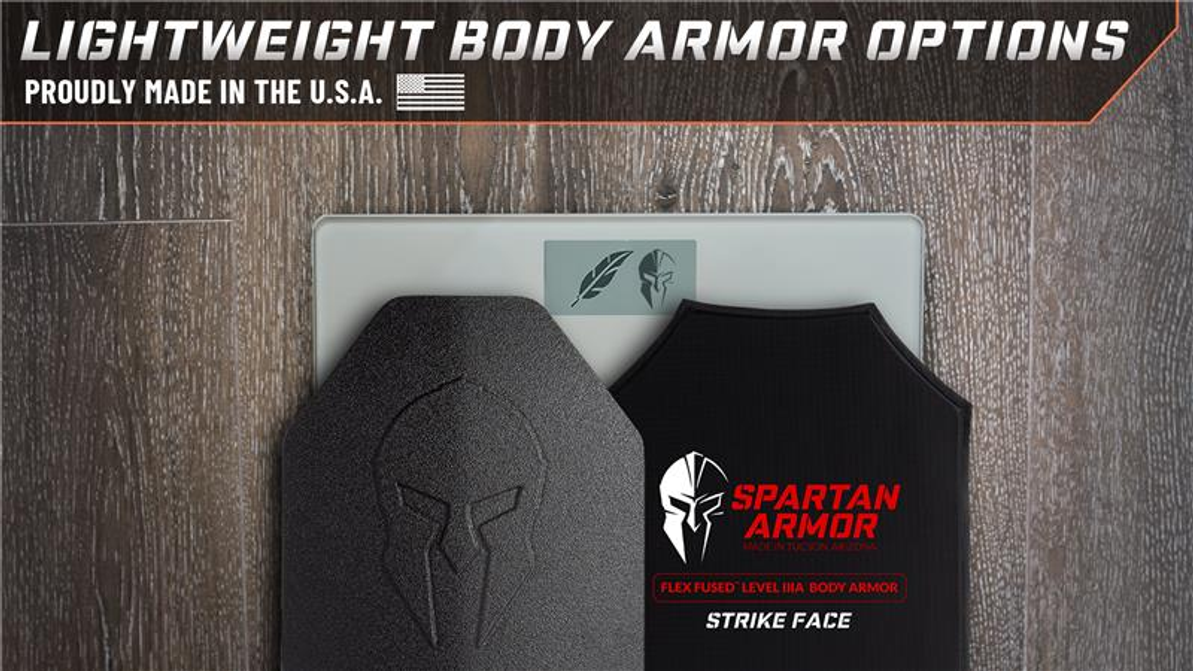Lightweight Body Armor Options
Lightweight Body Armor: A Smart Choice Beyond the Tactical Elite
Lightweight body armor isn’t just for operators, law enforcement, or SWAT teams. It’s a practical option for many people—whenever you want serious protection without the bulk. You’ll find lightweight armor covering threat levels from IIIA (handgun-rated) up to IV (armor-piercing rifle-rated).
By “lightweight,” we mean plates or panels well below the typical ~8 lb steel or ceramic standards.
Why Lightweight Armor Matters
- Concealability
One of the major advantages of light armor is its ability to remain discreet. In this post, we use the term concealable to describe any armor, hard or soft, with a thickness of 0.5 inches or less. Around today’s technology, that usually means Level IIIA, which is rated to stop common handgun threats such as .44 Magnum SJHP and .357 SIG FMJ rounds.
Because handgun violence far exceeds rifle attacks, concealable Level IIIA protection can be one of the most valuable safety investments you make.
- Mobility & Load Management
Even the fittest individuals feel the strain of carrying heavy gear. Two full-size plates in a carrier can easily push the weight over 20 lb—before you even add essentials like magazines, medical kits, or tools. That weight impedes speed, agility, and endurance.
In critical moments, mobility can make the difference between getting to safety or not. Shedding even a few pounds can improve performance—especially for people who aren’t strong or young, such as older adults, women, or those with physical limitations.
Lightweight plates also free up payload capacity, allowing you to carry mission-critical gear without becoming overburdened.
Real-World Examples: Lightweight Armor in Action
A standout example is our Elaphros series of lightweight composite plates. These plates weigh as little as 3.4–3.5 lb each, giving rifle-level protection while maintaining exceptional maneuverability. Compared to traditional steel or ceramic plates, our Elaphros plates represent a dramatic reduction in carried weight.
For those seeking versatility, there are concealable IIIA vests designed to accept additional rifle-rated plate inserts when needed. This hybrid approach gives users both concealment and the option to up your protection level when circumstances demand.
What’s the Best Armor? The One That Suits You
Instead of asking “What is the best armor?”, ask “What’s best for me?” Think through:
- Do you need concealment?
- How long might you wear it?
- Will your mobility or stamina be taxed?
- Do you need scale-up protection (e.g. rifle plates) later?
Whether you plan to wear armor on a daily basis or only in crisis scenarios, there are lightweight options tailored to a wide variety of needs. If you’d like help comparing specific models or narrowing your choices, feel free to reach out—I’m glad to help.
Get in Touch:
- Phone: Give us a Call/Text at (520) 396-3335
- Email: info@spartanarmorsystems.com
Recent Posts
-
Does Body Armor Expire?
If the milk in your fridge was 2 months overdue, would you still drink it? What if it was chunk …Oct 24th 2025 -
The Advantages of Equipping Trauma Pads
Purpose Spartan Armor Systems® non-ballistic trauma pads are inserts worn behind body armor plates. …Oct 23rd 2025 -
Level IV Comparison
Level IV Ceramic Body Armor Chart Comparison: Hercules Xtreme & Hercules Hercules Xtrem …Oct 15th 2025




